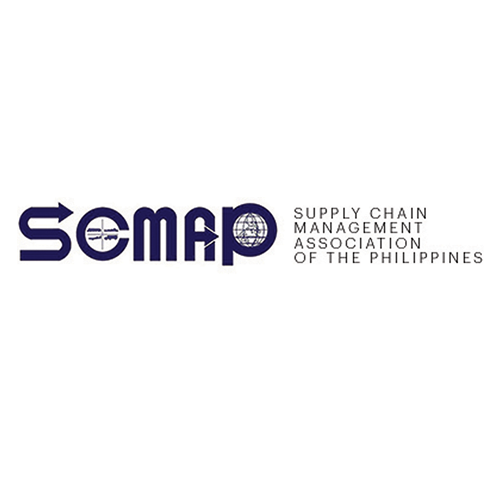One of the first things the Philippine government did when the first community quarantines were declared seventeen months ago was to call for “unhampered movement” of goods, providing some reassurance for logistics frontliners that they could continue operating—and, critically, delivering “essential goods” to the stores that have been allowed to stay open—throughout the lockdown.
It did help. We only saw empty shelves in those early months of the pandemic due to panic buying from consumers and the need for businesses to quickly recalibrate their operations. But ultimately, there were other things that prevented the movement of goods from returning to normal, whatever normality means these days.
Granted, the scenarios at this point in the pandemic don’t look dramatic. We haven’t had empty shelves like those seen in the UK and the US, where there weren’t enough workers to sort, deliver, and stock goods, leaving some stores out of items, or on the verge of running out. (The UK has a term for this: “pingdemic”, a reference to notifications people there get from a contact tracing app that advises them to self-isolate once deemed to be in close contact with a positive case. Those notifications spiked when restrictions were loosened last month.) Businesses here have managed to serve their customers within the restrictions for the most part, but shortages in personnel across the supply chain—say, truck drivers or port workers who test positive and are therefore sidelined—lead to delays.
And then there’s the unpredictability of severity in restrictions. In the past few weeks, Metro Manila and several provinces were put under “enhanced community quarantine” to delay the spread of the Delta variant. But some areas received these classifications at very short notice. Take Laguna, home of many manufacturers and logistics providers: the ECQ declaration for the province was made just hours before it took effect, leaving companies to scramble for accommodation and alternative arrangements for affected employees.
Sure, you can say it’s up to the private sector to make necessary adjustments. Yes, it has. Plans have been revised. Forecast horizons have gone forward. New fulfillment channels have been embraced. But as settled as things seem now, businesses are dreading the upheavals that they see coming, and the ones that they don’t. We know that the state of global trade remains precarious in light of increasing costs, decreasing number of empty containers, and the continuing threat of the Delta variant. (Just imagine what would happen if China expands the restrictions they have put in place in the last few days.) We know that the number of cases in the Philippines continues to go up, meaning it’s very much probable that current restrictions will go on for longer, both at a national and local level. This means more unpredictability on movement of goods, and therefore higher costs that will be passed down to the consumer.
With authorities seemingly more preoccupied with enforcing lockdowns through increasingly frivolous measures—take the ban on hatid-sundo for essential workers unless the driver has proper documentation including, among others, the employer’s business permit—rather than controlling the pandemic, well, this will go on for longer, much longer.
I must reiterate once again that the government should exert much more effort in managing and controlling the spread of COVID-19. Widen testing. Significantly improve contact tracing. Increase healthcare capacity. Expedite procurement and distribution of vaccines. (And unify those vaccination cards, while we’re at it.) Provide support for those sidelined by the pandemic—poor families, freelancers, those in industries deemed “non-essential”—that goes beyond the ayuda politicians seem to focus all their attention on when ECQ is declared. Recalibrate the end goal and work towards management rather than eradication. It’s increasingly likely that we won’t be rid of COVID-19 the way we haven’t gotten rid of the common flu, but does it mean we’ll have to live under constant lockdown, deal with closed shops and schools, and wear face shields for the rest of our lives?
It is disappointing that, almost a year and a half into the pandemic, there is still no clear roadmap for the Philippines to effectively manage the disease and to emerge into that much-vaunted “new normal” without uncertainties and misgivings. I may be wrong, but I think the last mention of any such roadmap was during the State of the Nation Address last year, when the president said there could be no plan without a vaccine. Now we have vaccines. 10% of the country’s population has received both doses. Provided we address supply and distribution issues, we should be picking up steam even further. Where’s the roadmap?
If we’re not clear about how we can truly get out of the woods, then all we’ll have is a vicious cycle of slowly loosened restrictions, spikes in cases, and sudden lockdowns. No matter what we do, our movement away from the worst of the pandemic will be hampered nonetheless for as long as the government remains reactive rather than proactive.
Last week it was announced that our gross domestic product grew 11.8% year-on-year in the second quarter of 2021. Considering our economy shrank 16.9% in the second quarter of 2020, 11.6% in the third quarter, 8.3% in the fourth quarter, and 3.9% in the first quarter of this year… we still have a very long way to go.
Henrik Batallones is the marketing and communications director of SCMAP, and editor-in-chief of its official publication, Supply Chain Philippines. More information about SCMAP is available at scmap.org.





